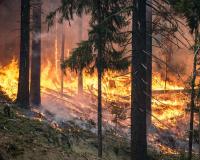
Vibrant Environment
All | Biodiversity | Climate Change and Sustainability | Environmental Justice | Governance and Rule of Law | Land Use and Natural Resources | Oceans and Coasts | Pollution Control

The 2018 wildfire season in California has been the state’s deadliest on record, and the 10 most deadly fires in California’s history occurred in the last four years. In a deviation from historic records, documentation of these recent fires show that their occurrence has become nearly year-round rather than seasonal. These fires pose extreme threats to 25 million acres of California’s wildlands, as well as to the 11 million people who live within the threatened area. In addition to intensifying climate change, faulty equipment and electric transmission from utility companies have contributed to the increase in wildfires in these high-risk regions. However, taking full monetary responsibility for these fires can lead to near or certain bankruptcy for the utility companies.
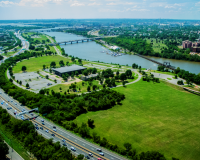
In the shadows of the Potomac River, the Anacostia River has long been known as D.C.’s forgotten river due to the effects of heavy pollution and neglect. With recent efforts to remediate the river, the Anacostia and its surrounding neighborhoods are a site of urban development and environmental gentrification.

Any self-respecting environmental lawyer knows, 2019 marks a major anniversary for environmental law: the Cuyahoga River fire of 1969. While we note the anniversary today, I doubt onlookers in Cleveland appreciated at the time that it would give rise to a five-decade era of environmental lawmaking.
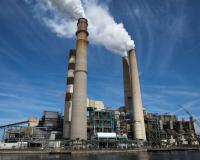
On April 12, 2019, the U.S. Court of Appeals for the Fifth Circuit vacated portions of the U.S. Environmental Protection Agency’s (EPA’s) 2015 Effluent Limitation Guidelines (ELGs) and Standards for the Steam Electric Power Generating Point Source Category (ELG Rule). ELGs are nationwide standards set by EPA to govern pollutant discharges from point sources.
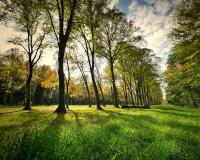
In ways that did not exist even ten years ago, everyday people are acting as scientists: contributing their time and data to make notable discoveries, answer lingering questions, and develop awareness. Motivated by technology innovations, public concern, and limited institutional capacity, citizen science is gently reshaping the conventional systems that address human health and environmental protection.
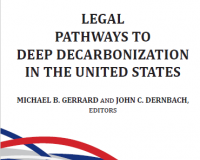
“For everything there is a season,” says the old Pete Seeger song, quoting the much older still book of Ecclesiastes. It seems that we are currently in the season of walls. The physical manifestation of this particular period may be the issue of the wall on our southern border. But there are other walls, and some of them have law as their concrete or steel.
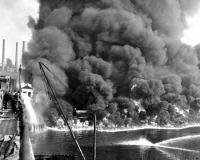
The famous Cuyahoga River fire of June 22, 1969 — the spur that started debate on pollution across the nation, and led to passage of the Clean Water Act three years later — is lodged more in legendary storytelling than in reality. The fire was actually fairly minor, causing only $50,000 in losses to the Republic Steel Mill located along the river, damaging some wooden trestles. Moreover, no photograph of the event exists — the photo reproduced here, like the one a month later in Time magazine, was from a much larger 1952 blaze.

By now, you have seen how biotech is transforming the food industry. You have also seen how it can revolutionize the construction and textile industries. In this final episode, we will explore biotechnology products you may find in your home in the near future.
The same platform used to brew hoppy beer without the hops, discussed in our last episode, is also transforming the fragrance business. In partnership with a Swiss perfume company, the bioscience firm Amyris synthetically produced patchouli, one of the essential oils that constitutes traditional perfume. This product, called CLEARWOOD®, was created using engineered yeast as its microbial platform, a more sustainable alternative to the costly and lengthy cultivation and extraction process of the patchouli plant. Meanwhile, Ginkgo Bioworks has designed its own aromatic oil....
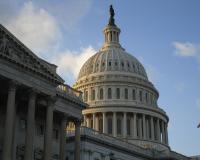
Climate policy has again risen to the top of the national agenda. Although the current Administration has taken actions such as withdrawing from the Paris Agreement or relaxing regulations on vehicle and power plant emissions, members of Congress are formulating progressive proposals to mitigate climate change, and states have taken ambitious steps to reduce carbon emissions. A carbon tax proposal has gained traction among conservative think-tanks and politicians, House Speaker Nancy Pelosi has formed a Select Committee on the Climate Crisis, and the Green New Deal has sparked a robust debate on pathways to a more sustainable future.

PFAS is a catch-all term for the chemical compounds per- and polyfluoroalkyls (including PFOA, PFOS, and replacements such as GenX). Seemingly overnight, these substances have gone from something talked about mainly by environmental lawyers and advocates to something that the public is increasingly focused on. The reasons for this shift include EPA’s and the states’ move to regulate these substances, recent lawsuits targeting PFAS manufacturers, and a better understanding of the way these substances may persist in the environment and harm human health. Because the future costs and obligations regarding the cleanup of, and human exposure to, PFAS are uncertain and likely significant, they present a challenge for environmental attorneys and their clients when performing deal diligence and negotiating contracts.